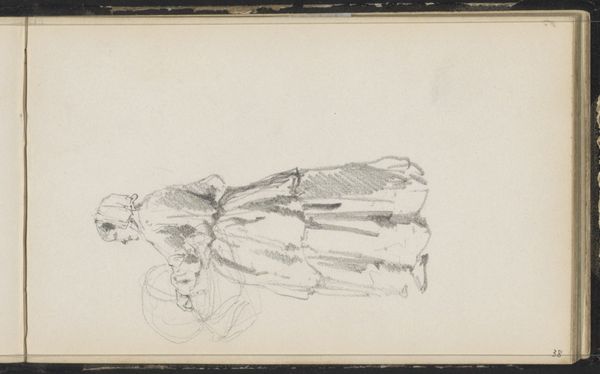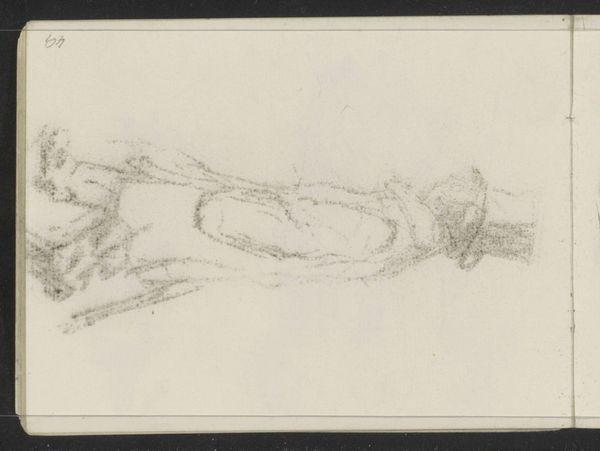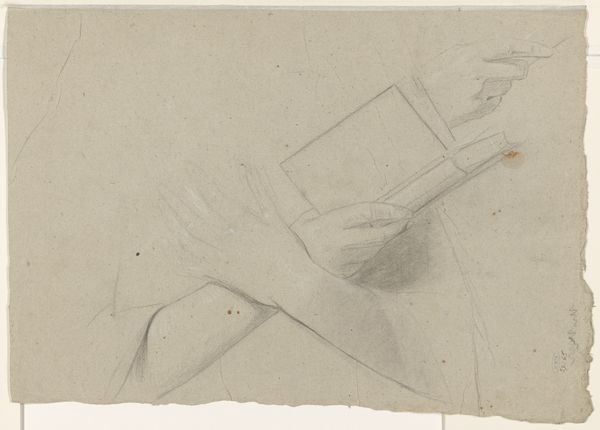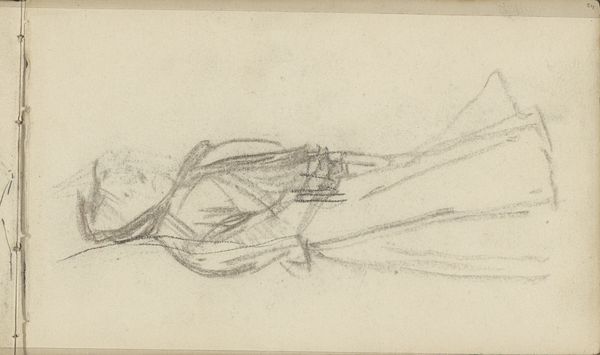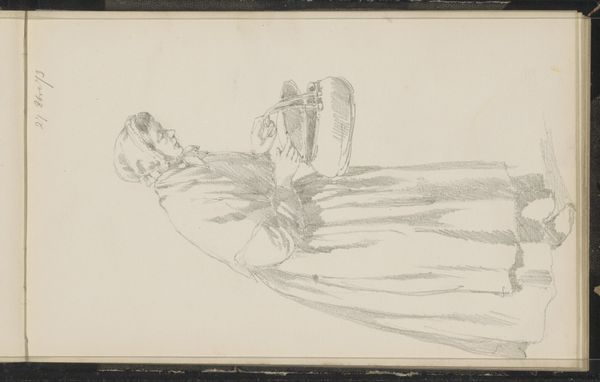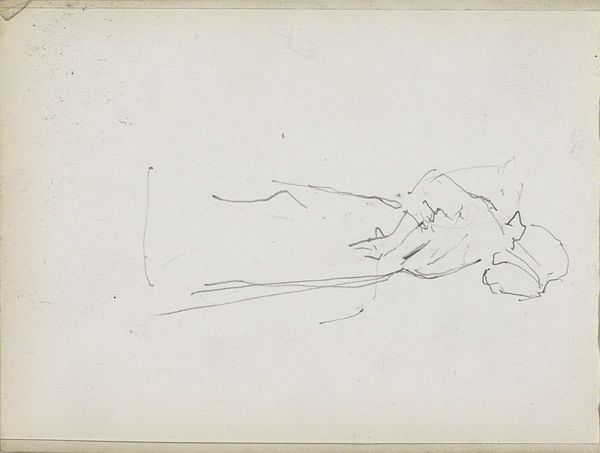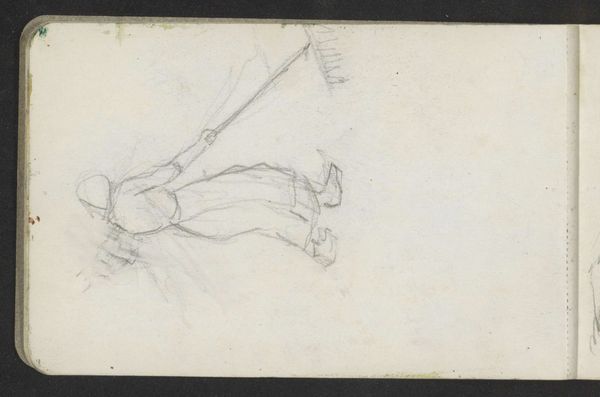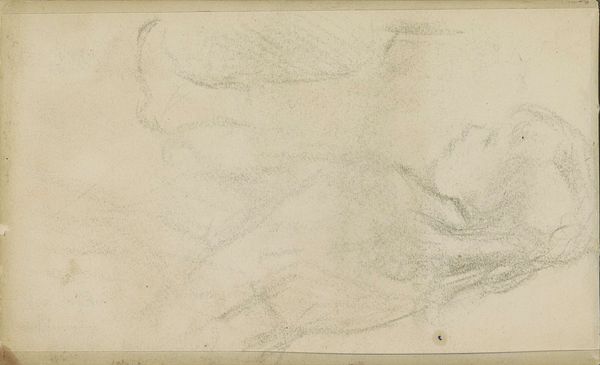
drawing, paper, pencil
#
portrait
#
drawing
#
pencil sketch
#
paper
#
pencil
#
academic-art
#
watercolor
Copyright: Rijks Museum: Open Domain
Editor: So, this is "Man die een rol papier voor zijn borst houdt," or "Man Holding a Roll of Paper to his Chest," created between 1892 and 1901 by Antoon Derkinderen. It looks like a pencil sketch on paper. It feels so delicate, almost fleeting. What do you see in this piece, that maybe I'm missing? Curator: Fleeting is the perfect word! To me, it feels like catching a half-remembered dream, doesn’t it? Derkinderen captures the essence of the man without rigid details. I imagine him scribbling in his sketchbook. What do you think he’s trying to communicate with such subtle lines? Editor: Maybe the raw thought before it becomes something concrete? The roll of paper feels significant. Curator: Exactly! It's that potential energy before the poem is written, the law is drafted. Consider the artistic climate around 1900 - there was a desire to represent inner psychological states in Symbolist art. The ephemeral sketch mirrored the subjectivity of the era. Are there ways it differs from work made in previous eras? Editor: I suppose earlier portraits aimed for accurate depiction and likeness, right? While this one feels more...interpretive? Curator: Precisely. I also think Derkinderen’s conscious use of the unfinished suggests the artwork’s refusal to embrace definite meaning or the impossibility of knowing another individual, like a moment hanging in the air between two people, fragile and alive with possibility. It reminds us to stop, breathe, and feel the world as it drifts all around. What I will continue to consider is that interplay between an almost childlike execution with academic prowess. Editor: That’s amazing. I’ll never look at a simple sketch the same way again. Curator: It just proves that a whisper can be louder than a shout, right?
Comments
No comments
Be the first to comment and join the conversation on the ultimate creative platform.
